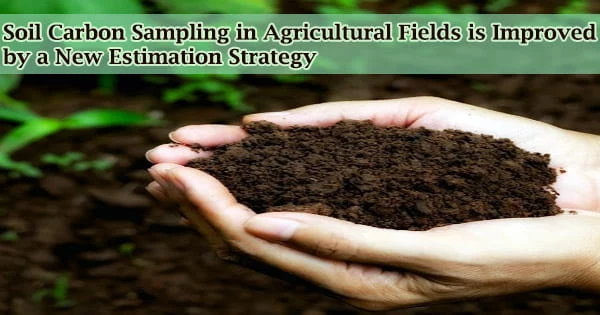Carbon is stored in the soil of the Earth far more than it is in the atmosphere. Soil organic carbon (SOC) refers to the portion of soil carbon that is in organic form (carbon bonded to carbon). In contrast to inorganic carbon in soils, humans may influence the amount of SOC and how rapidly it is built up or destroyed.
Agriculture has released a considerable quantity of SOC into the atmosphere as carbon dioxide since its inception roughly 10,000 years ago, contributing to climate change.
Quantifying the quantity of SOC in agricultural fields is thus critical for monitoring the carbon cycle and establishing sustainable management strategies that reduce carbon emissions and store carbon from the atmosphere to the soil in order to mitigate or reverse agriculture’s climate effects.
“Accurate and efficient SOC estimation is essential,” said Eric Potash, a Research Scientist in the Agroecosystem Sustainability Center (ASC) and Department of Natural Resource & Environmental Sciences (NRES) at the University of Illinois Urbana-Champaign.
“Governments need to estimate SOC in order to implement policies to minimize climate change. Researchers need to estimate SOC to develop sustainable management practices. And farmers need to estimate SOC to participate in emerging carbon credit markets.”
Soil sampling and lab studies are the most established and dependable methods for quantifying SOC (“wet chemical” measurement). But where in the field should samples be taken?
Accurate and efficient SOC estimation is essential. Governments need to estimate SOC in order to implement policies to minimize climate change. Researchers need to estimate SOC to develop sustainable management practices. And farmers need to estimate SOC to participate in emerging carbon credit markets.
Eric Potash
And, in order to have an accurate estimate, how many samples need be taken? Each new soil core adds significant time and price, and uncertainty about how to best sample might result in large additional costs.
Potash and other SMARTFARM researchers analyzed ways for predicting SOC in a new report from the US Department of Energy’s (DOE) SMARTFARM Project. Their goal was to devise a method of estimation that maximized accuracy while reducing the number of soil cores tested.
The DOE’s Advanced Research Projects Agency-Energy (ARPA-E) is funding the SMARTFARM Project, which is led by co-author and Blue Waters Professor in NRES Kaiyu Guan and aims to develop a precise system for tracking and quantifying greenhouse gas emissions and SOC change throughout crop production.
“We aim to collect gold-standard ground truth data and also to develop new technology to quantify field-level carbon outcomes for bioenergy crops, improving yield and also improving environmental sustainability,” said Guan, ASC Founding Director.
This work is made possible with unprecedented data collection effort.
“We have collected 225 soil samples at 3 samples per acre at one of the SMARTFARM sites. The samples were collected up to 1 meter deep using a Giddings probe. This level of dense sampling has never been done before,” said co-author DoKyoung Lee, a Professor of Crop Sciences, a co-PI of the SMARTFARM project, and also an ASC founding faculty member.
The researchers evaluated the two phases involved in estimating SOC in this study: (1) determining where in a field to obtain soil samples; and (2) agreeing on a statistical procedure for producing an estimate (called an estimator).
A number of methodologies might be examined for their performance in estimating SOC in the field by using a commercial field in central Illinois that had been intensively sampled to measure SOC.
The researchers discovered that they may use publicly available soil surveys and satellite data to efficiently choose sample locations in a typical Midwestern agricultural field. When compared to picking sampling locations at random, this should lower the number of samples required to attain a certain level of SOC quantification accuracy by roughly 28%.
“For researchers and agencies monitoring SOC stocks, this study offers a strategy to increase accuracy, supporting cost optimization of sampling methods,” said co-author Andrew Margenot, Crop Sciences Assistant Professor and ASC Associate Director.
“Future studies can use these findings both as a benchmark against which to compare new SOC stock estimation strategies and as a demonstration of how to evaluate those strategies,” Potash said.
The study team is currently gathering data from a variety of other sectors to see if their findings can be generalized and to develop new SOC estimating methodologies. Members of the team are also working on a software program to let farmers and researchers use their improved sampling methods.
















